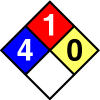I'm just gonna copy another post I made here. It might clarify for a future reader who stumbles on this thread.
When people say their nic base is "pure", usually they mean it's really clean and lacks the nasty flavor of bad nic.
The strongest nic base easily available, the nic that most DIY vapers buy, is 100mg/ml of nic. That is actually 10% nicotine, plus VG and/or PG, and perhaps some distilled water. Basic safe mixing in your kitchen is fine with this strength; you don't want to bathe in it, but cleaning up some spilled drops on your skin isn't going to kill you. 1,000mg/ml nicotine (which is literally 100% nicotine) can kill you.
(I'll say "nobody" here and someone might object, but I'll stick with that anyway) Even at the 10% (100mg/ml) nic strength - nobody vapes that without diluting it more. Most juice companies sell eliquid at MAX strength of 36mg/ml or 24mg/ml. That is 3.6% and 2.4% nicotine strength.
So if you buy 100mg/ml nic (10% nicotine in PG/VG/water), you add MORE PG/VG/water to get to your target strength.
One part of 100mg/ml nic base plus 9 parts of other stuff makes 10mg/ml nic strength.
One part of 100mg/ml nic base plus 8 parts of other stuff makes 11.1mg/ml nic strength.
One part of 100mg/ml nic base plus 7 parts of other stuff makes 12.5mg/ml nic strength.
One part of 100mg/ml nic base plus 6 parts of other stuff makes 14.3mg/ml nic strength.
One part of 100mg/ml nic base plus 5 parts of other stuff makes 16.6mg/ml nic strength.
One part of 100mg/ml nic base plus 4 parts of other stuff makes 20mg/ml nic strength.
One part of 100mg/ml nic base plus 3 parts of other stuff makes 25mg/ml nic strength.
One part of 100mg/ml nic base plus 2 parts of other stuff makes 33.3mg/ml nic strength.
Now you can add flavoring, which will reduce that nic strength further. If you add 10% flavoring, you reduce the strength 10%, for example.
Instead of adding flavoring after diluting nic, you can include it in the "other stuff." To do that, you either need to be good at mental math or use a calculator. I use the easy method, because I really don't notice a huge difference between 16.6mg/ml nic strength and 15mg/ml (strength of my diluted nic before and after adding about 10% flavoring, which is the most I tend to use).
Everyone should always ask all the questions they have about this - it's important to stay safe, and to get the results you want.



